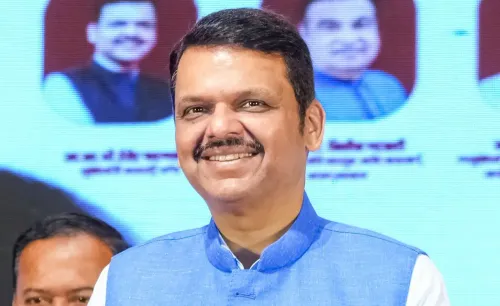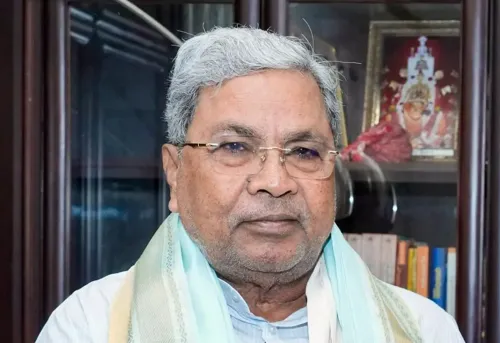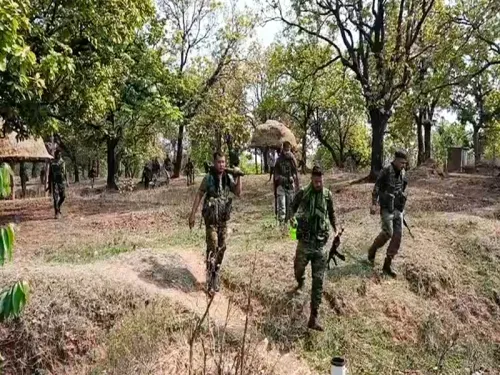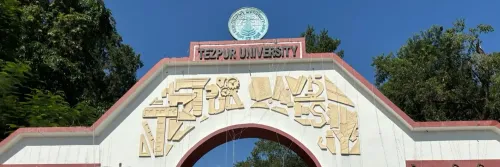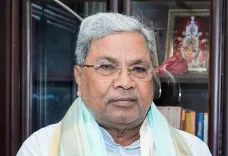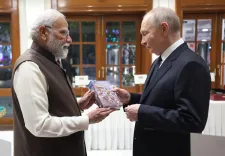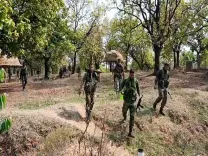Has the Red Corridor Crumbled Under Modi's Governance?
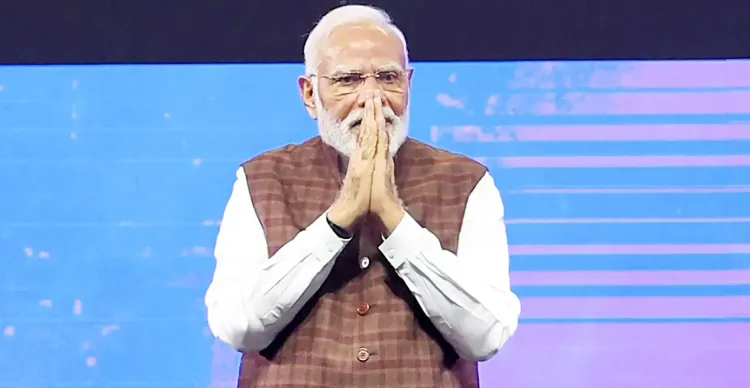
Synopsis
Key Takeaways
- Mass surrenders of Maoist cadres mark a significant turning point.
- Violence has decreased drastically in formerly affected areas.
- The dual strategy of security and development is proving effective.
- Chhattisgarh’s rehabilitation policies are encouraging social reintegration.
- PM Modi’s vision aims for a unified and prosperous India.
Raipur, 18 Oct (NationPress) In a remarkable advancement, the government of PM Modi has delivered a significant blow to Maoist insurgency, evidenced by mass surrenders and a striking reduction in violence across former conflict zones.
Once the heart of red terror, the Red Corridor is now in disarray— a testament to India’s dual approach of security and development yielding a sustainable impact.
This monumental shift was highlighted by the surrender of over 200 Maoist militants, including a Central Committee member and senior leader Rupesh, who gave themselves up en masse at the Reserve Police Lines in Jagdalpur, Chhattisgarh, on Friday.
Fueled by strategic security operations and strong development initiatives, this situation illustrates a sophisticated understanding of counterinsurgency, with Chhattisgarh’s recent achievements serving as a model for enduring peace.
The mass surrender of over 300 Maoist militants in merely 72 hours, including the Central Committee member and senior leader Rupesh, occurred in Jagdalpur, Chhattisgarh, on October 17.
Among the first group of 208 — consisting of 110 women and 98 men from the Dandakaranya region — a total of 153 weapons were handed over, with a combined bounty of Rs 9.18 crore.
Welcomed with flowers and copies of the Indian Constitution, this event highlighted a growing rejection of Maoist ideology in favor of democratic reintegration, signifying the ideological collapse of the insurgency.
On the same day, during the NDTV World Summit in New Delhi, Prime Minister Narendra Modi framed this moment as a historic turning point.
“The day is not far when India will be free from Maoist terror,” he promised, offering his “personal guarantee” to eliminate this long-standing threat.
PM Modi emphasized the diminishing influence of Maoists, with affected districts dropping from 182 in 2014 to a mere 11 by October 2025, only three of which remain high-risk. He noted that 303 Maoists surrendered in the last 72 hours.
“These were not ordinary Naxalites. They are now ready to embrace the Constitution,” he stated, attributing success to policies that combine enforcement with opportunity. PM Modi’s address resonated with empathy for the affected communities.
“Maoist terror is a grave injustice, a sin against our youth,” he lamented, reflecting on the “countless mothers who lost sons to Naxal violence.” He shared the stories of victims—villagers, farmers, and tribals, some with amputated limbs—who spent a week in Delhi pleading for their voices to be heard, exposing the human toll of Maoism and challenging narratives that romanticize the insurgency.
“These were poor villagers, farmers, and tribals – some of them with amputated limbs; standing with folded hands, holding a press conference to demand their message reach the people—not those who shield Maoists while parading the Constitution,” PM Modi remarked, condemning “urban Naxals” and previous Congress-led governments for allegedly concealing Maoist atrocities.
The Naxalite movement, which is rooted in Mao Zedong’s revolutionary principles, began in 1967 in Naxalbari, West Bengal, led by Charu Majumdar and Kanu Sanyal.
Intended to address land inequality through armed rebellion, it spread across the “Red Corridor,” including Jharkhand, Odisha, and Chhattisgarh. The 2004 formation of the Communist Party of India (Maoist) intensified the insurgency, claiming over 10,000 lives since 2000 and hindering development.
Chhattisgarh’s Bastar region, characterized by its dense jungles, became a stronghold for Maoists. The state’s establishment in 2000 witnessed increased violence, including the 2010 Dantewada attack that resulted in the deaths of 76 CRPF personnel.
The controversial Salwa Judum campaign, aimed at countering Maoists, faced criticism for human rights violations, further alienating tribals caught in the conflict. Chhattisgarh’s Naxal Surrender and Rehabilitation Policy 2025 has emerged as a transformative strategy in combatting insurgency.
This policy provides financial assistance, vocational training, land allotments, and government jobs, which, combined with programs like “Niyad Nella Naar Yojana” and “Poona Margem,” has encouraged over 2,000 surrenders since its inception.
Under this policy, the government grants surrendered Naxalites Rs 50,000 as initial aid, Rs 10,000 monthly for three years, and full bounty rewards (up to Rs 1 crore). High-value cadres are given 4 decimals of urban land or 1 hectare of farmland, or Rs 2 lakh in lieu. Surrendering weapons can yield up to Rs 5 lakh (e.g., AK-47).
Additional support includes free housing, rations, healthcare, education, vocational training, and job opportunities. Village-level surrenders unlock Rs 1 crore for development. Over Rs 150 crore has been allocated, prompting hundreds of surrenders in just 2025.
Union Home Minister Amit Shah recently tweeted, “It is a matter of immense satisfaction that regions once regarded as epicenters of terror—Abujhmad and North Bastar in Chhattisgarh—have now been officially declared free from Naxalite violence. Only a few scattered elements remain in South Bastar, and our security forces are ready to neutralize them rapidly.”
He further stated, “Since the BJP government took office in Chhattisgarh in January 2024, a total of 2,100 Naxalites have surrendered, 1,785 have been arrested, and 477 have been neutralized. These figures reflect our steadfast commitment to eradicate Naxalism from its roots by 31 March 2026.”
Earlier in October, during his visit to Chhattisgarh for the Bastar Dussehra festival and Muria Durbar, HM Shah urged Maoists to abandon arms and rejoin the mainstream but cautioned, “those who choose violence will face decisive action.”
In a different post, he asserted, “There are no human rights for those who roam with weapons in hand. Rights come with the renunciation of violence—dialogue will not be held with those who refuse to disarm.”
Chhattisgarh Chief Minister Vishnu Deo Sai credits this policy for restoring trust among tribals, with former Maoists reintegrating as farmers, teachers, and entrepreneurs. This has revitalized regions like Bastar, reducing violence by 85% and facilitating development projects. The policy’s emphasis on dignity and opportunity has weakened Maoist recruitment, fostering hope and stability.
Under Sai’s leadership, Chhattisgarh has experienced an 85% reduction in Naxal incidents, with North Bastar and Abujhmad now declared Naxal-free.
Security operations, including forward bases in remote areas, have disrupted Maoist networks, while development projects have introduced roads, schools, and hospitals to isolated villages. The Bastar Olympics, a tribal-led celebration of culture and sport, represents this revival.
“This Diwali will be different in areas once scarred by Maoist terror,” PM Modi assured, envisioning celebrations free from fear. Disillusioned former Maoists are now integrating into mainstream life.
As India approaches its 2026 objective of a Naxal-free nation, tackling root causes such as land rights and inequality is vital to prevent a resurgence. With the Red Corridor fading and optimism rising in Bastar, PM Modi’s vision of a more unified and prosperous India is becoming increasingly attainable.


